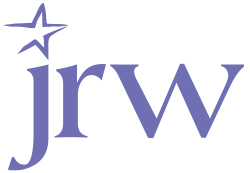|
Post by Kim Sigelman. I’ve heard the phrase “these are unprecedented times” more times in the past few weeks than I could ever count. But the fact of the matter is – these are unprecedented times. Businesses have to adjust almost daily. With many companies moving to remote workspaces, brick and mortar stores closing, and business models flipping on their sides, it's more important than ever to have solid social messaging to communicate with your customers effectively. But how do you cut through the noise to ensure your message is delivered? Furthermore, is your message pertinent right now, or can it wait? We’ve all seen social media posts that have not only fallen flat, but they've also wholly failed and left brands scrambling. Here are 6 tips for successful social media marketing during times of crisis. None of these are foolproof – but hopefully, they will provide a basis for your brand as you navigate this highly volatile time. 1. Be proactive, assuage fears; don't cause panic. The news is scary right now. Brands need to communicate with their customers but should create content using appropriate tone and context. In the middle of our current crisis, many brands took to their social channels to announce they were proactively reducing hours or closing stores altogether. FreePeople, a global clothing retailer, for example, announced that they were not only closing stores but were revising their return and refund policies. Additionally, they assured customers that their employees would be paid during the closures. This positive and proactive attitude went a long way to show their commitment to their people - both customers and employees. 2. Content should be relevant. If you aren’t affected, choose silence. Everyone is feeling all different kinds of ways right now. We're anxious, we're tired, and (if you're like me), we're continually scrolling to see the latest updates. It can be really tempting to have your brand join the conversation. Before you post anything, remember that silence is always better than sticking your foot in your mouth. Unless it isn’t. If the crisis directly impacts your accounts, get the people that need to be together – together. Form a plan and say what needs to be said. For instance, one of my clients is a non-profit organization that supports homeless outreach organizations in their community. Their stakeholders need to hear how they are helping people experiencing homelessness. 3. Check your content. And reschedule if necessary. Most of us rely on schedulers to plan our content weeks and, if you’re very efficient, months in advance. Check your scheduled posts and move anything that isn’t relevant or in the right tone. Our team got together and pulled every scheduled post that wasn’t appropriate (See Tip #1) and developed new content to convey messaging relevant to today. We live in the (mis)information times. Before you repost or share content – FACT CHECK. FACT CHECK. FACT CHECK. Don’t assume because another “reputable source” posted something that it’s correct. And if you are unable to verify the information, it’s better to find other content to share. 4. Check your approvals.
If you typically have the latitude to create content without client or higher up approval, check in with your team. It's essential to get the messaging right the first time. Getting your team to sign-off is vital. If you don't have a team, inventory your personal and professional network. Can you run your content by a former colleague whose opinion you value? Reach out to them and ask if they have time and are willing to review your content to make sure the tone is appropriate for the time. 5. Set expectations. None of us know how long this crisis is going to last. (Wouldn't it be nice if we did?) Now is not the time to worry about social media growth and your typical KPIs. You can get back to that in a month when the new normal is established. Focus on creating open, transparent communication, and encouraging engagement. Your stakeholders may be worried about several different things, and your posts may become a safe space for them to communicate their concerns. 6. Engage. As often as you can. For those of you who run accounts in industries that are directly affected (travel, healthcare, grocery, etc.), engagement should be your primary focus. Stakeholders need to be heard, and they need to know you are listening. I've tried to always respond to comments and inbox messages within 24 hours, but for affected industries, it's important to respond to questions and comments faster. Take a look at Southwest Airlines Twitter feed. They do a great job of responding to all comments – positive and negative – quickly. These are tough times. In this technologically advanced age, social media is integral in communicating during a crisis. Tone-deaf or irrelevant content will be, at best, lost in all of the noise. At worst, it could damage a brand's reputation. Be measured, strategize, and post in moderation. Don't waste good, but not appropriate or timely, content now. Save it for when we get through this together. Have you seen a brand that's doing social media well right now? Share their handle and this post on LinkedIn. I'd love to give them a follow.
0 Comments
Post written by Kim Sigelman. Traditional public relations plans consist of media relations, reputation management, press releases, and crisis management. But in this digitally focused and very socially aware age, it should also include community management and engagement on social media. Facebook, Instagram, and Twitter are fast becoming the grandparents of social. Youthful platforms like Snapchat and TikTok are quickly gaining street cred among brands and businesses. And we can’t forget everyone’s very finicky aunt, LinkedIn, who’s getting invited more and more to the PR planning table.
With so many platforms and so little budget, how can you successfully implement a social strategy into your PR plan? How do you keep ahead of trends in a totally fickle digital world while staying true to your brand? Check out my quick tips for how to include social in your PR plan to maximize your time and your budget. More isn’t Always More Six social media platforms have already been mentioned, and I'm only two paragraphs in. YouTube and Pinterest are two more apps commonly used by brands. But what about the less talked about, but still-popular apps like Tumblr and Reddit? The sheer number of apps available to brands is in the dozens. And that doesn’t even take into account all the apps currently under development by techies worldwide. Before you start creating usernames for every platform, I suggest starting slow and selecting quality over quantity. For each platform, you need about two hours per week to honestly engage with your audience. That's replying to comments and fielding questions, as well as liking and commenting on accounts you follow. Add in additional hours to create and schedule content. Time adds up quickly, and budget disappears even faster. My tips: pick one platform to focus on. Curate great, client-centric content. Engage daily. Build online relationships with influencers. Put some money into paid advertising, because it pays to play. Follow Your Customers You’re ready to dive in and give 100% to one platform, but how do you pick which one to use. In theory, the answer is easy – follow your customers. Social media giant SproutSocial (more on them later) have made it easier to find your customers. You can use their handy demographics guide to figure out your social starting point. My tips: dive into your demographic data and compare it with the demographics guide (or source your own). Pick the top three platforms where your customers hang out and prioritize from there. Hashtag This Advertising is expensive, and algorithms are really confusing. So how can you make sure that your content is being seen by the most eyes? Besides creating stellar images with compelling copy, hashtags are a free and easy-ish way for customers to find you. I say “easy-ish” because it’s not enough to pick 10 words or phrases that fit your brand and your post. Think strategically. Too generic of a hashtag will have your post lost in a sea of millions of others. Too specific of a hashtag elicits the opposite result – no one will find it. Hashtags aren’t dead yet, but Instagram keeps a rotating list of banned tags that will see your post virtually hidden from feeds. My tips: create a branded hashtag or two focused on your motto or tag line and use those consistently. Pick a couple of industry-specific hashtags. And rotate in post-specific tags that correlate directly to the content. Bonus Tips: don’t overuse hashtags on platforms that don’t support them. Facebook is wishy-washy, so keep your multiple hashes to Twitter and Instagram. Lean on the Pros Your social strategy has been approved. Congratulations! Now what? There are so many tools available to help you with everything from post creation, to scheduling, to social listening. The following are just a few of the ones that I've come to rely on – heavily. (I'm not paid to say this, and I don't get anything except the joy of sharing knowledge if you click these links.)
Follow for Follow Some brands totally get it wrong. And then there are the brands that seem to get it. Like the Washington Post on TikTok, Chiptole on Instagram, and the State of New Jersey on Twitter. Who do you follow on social that you think is killing the social game? My tips: make a list of your favorite accounts and highlight why you love them. Learn from that and then share those accounts (and this post) on social, so we can learn from them, too. |
CONTRIBUTORSPosts are written by JRW PR & Marketing team members. To learn more about individual authors, please visit the Team page. Archives
March 2020
Categories |



 RSS Feed
RSS Feed